Intellectual Property (IP) management has become an essential aspect of modern business operations. With the rapid growth of technology and the increasing complexity of IP assets, companies are turning to specialized software solutions to streamline the process of managing their IP portfolios. In this article, we will explore what IP management software is, its importance, key features to look for, and the best options available in the market today.
Understanding IP Management Software
IP management software refers to tools and platforms designed to assist businesses in tracking, managing, and protecting their intellectual property assets. These assets can include trademarks, patents, copyrights, trade secrets, and more. By utilizing these software solutions, companies can efficiently organize their IP-related data and ensure that their rights are upheld.
What is IP Management Software?
At its core, IP management software provides a comprehensive suite of features that enable users to manage their IP portfolios effectively. This includes tracking important deadlines, maintaining documentation, managing licenses, and assessing the overall value of IP assets. The software often integrates with existing enterprise resource planning (ERP) systems to provide a cohesive approach to asset management. Additionally, many modern IP management solutions offer cloud-based functionalities, allowing for real-time collaboration and access from anywhere in the world, which is particularly beneficial for companies with global operations.
Importance of IP Management in Business
Effective IP management is crucial for several reasons. It allows businesses to protect their innovations and brand reputation while maximizing the value derived from their intellectual property. A well-structured IP management strategy can help mitigate risks associated with infringement and ensure compliance with legal requirements.
Moreover, robust IP management practices can lead to greater competitive advantage, as they enable companies to utilize their IP assets more strategically. In an era where technology and market dynamics are rapidly evolving, businesses that prioritize IP management are better positioned to adapt and thrive. They can leverage their intellectual property not only to secure market share but also to explore new revenue streams through licensing agreements or collaborations with other entities. As a result, the role of IP management software becomes increasingly vital in navigating the complexities of today’s business landscape.
Furthermore, the integration of analytics and reporting features within IP management software allows businesses to make data-driven decisions regarding their intellectual property. By analyzing trends in patent filings, trademark registrations, and licensing activities, companies can gain insights into their competitive landscape and identify potential areas for growth. This strategic foresight can be invaluable in shaping future R&D initiatives and aligning them with market demands, ultimately leading to sustained innovation and success.
Key Features of Top IP Management Software
When evaluating IP management software, it’s important to identify features that will enhance your management processes. The following are some of the key features to consider:
User-Friendly Interface
A user-friendly interface is paramount for ensuring that all team members can access and utilize the software efficiently. Intuitive navigation and clear layouts are essential for minimizing training time and increasing adoption rates across departments.
Many platforms offer customizable dashboards, allowing users to prioritize the information and metrics most relevant to their roles. This personalization not only improves individual productivity but also fosters a sense of ownership among team members, as they can tailor their experience to fit their unique workflows. Furthermore, the inclusion of interactive tutorials and help sections within the interface can significantly enhance user confidence, making it easier for new employees to get up to speed quickly.
Robust Security Measures
Given the sensitive nature of intellectual property, strong security measures are crucial. Look for software that provides data encryption, secure user access controls, and regular security audits. Compliance with data protection regulations, such as GDPR, should also be a priority. Additionally, features like two-factor authentication and activity logs can provide an extra layer of security, ensuring that only authorized personnel can access sensitive information and that any unauthorized attempts are recorded and addressed promptly.
Moreover, the ability to set role-based permissions allows organizations to control who can view or edit certain data, further safeguarding proprietary information. Regular updates and patches are also vital, as they protect against emerging threats and vulnerabilities in the software landscape, ensuring that your IP management system remains resilient against cyberattacks.
Comprehensive Reporting Tools
Comprehensive reporting tools enable businesses to analyze their IP portfolios effectively. This includes tracking spending, licensing revenue, and potential risks. A good software solution will provide customizable reporting options, allowing users to generate reports based on specific metrics and KPIs that matter most to their organization. The ability to visualize data through graphs and charts can also enhance understanding and facilitate more informed decision-making.
In addition to standard reporting features, advanced analytics capabilities can provide deeper insights into trends and patterns within the IP portfolio. For instance, predictive analytics can help organizations forecast future revenue streams from licensing agreements while benchmarking tools can compare performance against industry standards. This level of analysis not only aids in strategic planning but also empowers businesses to make proactive adjustments to their IP strategies, ensuring they remain competitive in an ever-evolving market.
Evaluating IP Management Software
Choosing the right IP management software requires careful evaluation of various factors. Below are some elements to consider during the selection process.
Factors to Consider When Choosing IP Management Software
- Scalability: Ensure the software can grow with your business needs.
- Integration: Look for compatibility with existing systems, such as accounting or CRM software.
- Support and Training: Evaluate the vendor’s customer support and training resources.
- User Reviews and Reputation: Research user reviews and vendor reliability before making a purchase.
Understanding Pricing Models
Pricing models for IP management software can vary significantly. Some common models include subscription-based pricing, where users pay monthly or annually, and one-time purchase options. It’s vital to understand what is included in the pricing, such as updates, support, and additional features.
Comparing different pricing options against your budget and required features will help you determine the best value for your organization.
In addition to the basic pricing structures, consider the potential for hidden costs that may arise after implementation. For instance, some vendors may charge extra for advanced features, additional user licenses, or even for technical support beyond a certain threshold. It’s essential to clarify these aspects upfront to avoid unexpected expenses down the line. Furthermore, think about the long-term implications of your choice; a more expensive solution might offer better scalability and support, ultimately saving you money as your needs evolve.
Another critical aspect to explore is the software’s user experience and interface design. A well-designed interface can significantly enhance productivity by making it easier for team members to navigate and utilize the software effectively. Look for platforms that offer customizable dashboards and intuitive workflows, as these features can streamline operations and reduce the learning curve for new users. Engaging with demos or trial versions can provide valuable insights into how user-friendly the software is and whether it aligns with your team’s working style.
Top IP Management Software in the Market
As businesses seek effective intellectual property (IP) management, Computer Packages Inc. (CPI) software and services provide a powerful, trusted choice.
Overview of CPI’s IP Management Solution
- Web-Hosted IP Management System: CPI’s mobile-responsive, secure platform supports all aspects of IP management with ease and scalability for organizations of any size.
- Real-Time Patent Management: Integrating patent office data from over 100 countries, CPI’s system streamlines patent portfolio growth and deadline tracking.
- Trademark Management System: Comprehensive trademark management with integrated data modules simplifies data entry and ensures reliable record-keeping.
- General Matters System: A flexible tool for managing licenses and agreements linked to IP, featuring dynamic search capabilities and professional reporting.
- Patent Annuity Management: CPI’s paperless system provides precise annuity payment management, minimizing risks of missed deadlines.
- Patent Audit Service: Affordable, high-quality patent audits utilize data checks and country-specific expertise for reliable due diligence.
CPI’s Distinct Advantages
- Effortless Data Conversion: Over 55 years of experience and dedicated support staff ensure seamless migration from legacy systems.
- Unlimited Training & Support: CPI offers unlimited multilingual training, reducing onboarding costs and maximizing software use.
- Cost Efficiency and Lifetime Support: CPI’s lifetime maintenance without forced upgrades cut costs while ensuring high-quality support.
- Third-Party Integration: Seamless compatibility with tools like iManage and Power BI supports flexible workflows.
- Expertise in Public Data: CPI’s unique data handling strengthens reliability and efficiency across IP functions.
CPI’s focus on seamless integration, security, and user-focused design makes it a top IP management solution trusted by businesses worldwide.
Transitioning to a New IP Management Software
Implementing a new IP management software can be a daunting task, but with the right approach, it can also be a seamless transition. The choice of software often reflects the evolving needs of an organization, and making the switch can lead to significant improvements in efficiency and productivity. However, it is crucial to recognize that this transition is not just a technical upgrade; it is also a cultural shift that requires buy-in from all levels of the organization.

Steps to Implement New Software
- Assessment: Evaluate your current processes and identify areas that require improvement. This initial step is vital as it sets the foundation for the entire transition. Engage with various departments to understand their specific needs and pain points, ensuring that the new software aligns with organizational goals.
- Training: Develop a training schedule for team members to familiarize themselves with the new software. Consider different learning styles and offer a mix of hands-on training, webinars, and written resources to cater to everyone. This investment in education will empower users and enhance overall adoption rates.
- Data Migration: Ensure that all existing IP data is accurately migrated to the new system. This step is critical, as any discrepancies can lead to significant issues down the line. Implement a thorough validation process to confirm that data integrity is maintained throughout the transition.
- Feedback: Collect feedback from users to continuously improve the adoption process and software functionality. Establish regular check-ins and create a feedback loop that encourages open communication. This not only helps in refining the software usage but also fosters a sense of ownership among the team.
Overcoming Common Challenges in Transition
During the transition, common challenges such as employee resistance, data discrepancies, and integration issues may arise. To address these challenges:
- Communicate the benefits clearly to all stakeholders. Highlight how the new software will streamline processes, reduce manual errors, and ultimately save time and resources. Tailor your messaging to resonate with different teams, focusing on how it specifically impacts their work.
- Provide ongoing support and resources to ease concerns. Establish a dedicated support team that can assist users as they navigate the new system. This could include a help desk, online forums, or regular Q&A sessions, ensuring that no one feels left behind during the transition.
- Regularly assess the progress of the implementation to make necessary adjustments. Set measurable goals and milestones to track the transition’s success. By celebrating small wins and addressing setbacks promptly, you can maintain momentum and keep the team engaged throughout the process.
Moreover, fostering a culture of adaptability is essential during this period. Encourage team members to share their experiences and insights as they work with the new software. This collaborative approach not only helps in troubleshooting issues but also builds a sense of community and shared purpose. As employees become more comfortable with the new system, they may even discover innovative ways to leverage its features, leading to enhanced workflows and productivity that were previously unimagined. The transition to new IP management software can ultimately catalyze broader organizational change, paving the way for future technological advancements.
Conclusion
Choosing the best IP management software is a critical decision for any business that values its intellectual property. By understanding the features, evaluating options, and approaching the transition thoughtfully, organizations can successfully enhance their IP management strategies. The right software can not only safeguard your valuable assets but also drive innovation and growth, contributing to long-term success.
Computer Packages Inc. (CPI) is a privately owned IP management company with over fifty years of experience serving the IP community. Our mission is to be the most trusted partner in safeguarding clients’ IP assets with innovative IP management software and annuity services. Learn how we specialize in IP patent, trademark, and annuity management by exploring our services.


